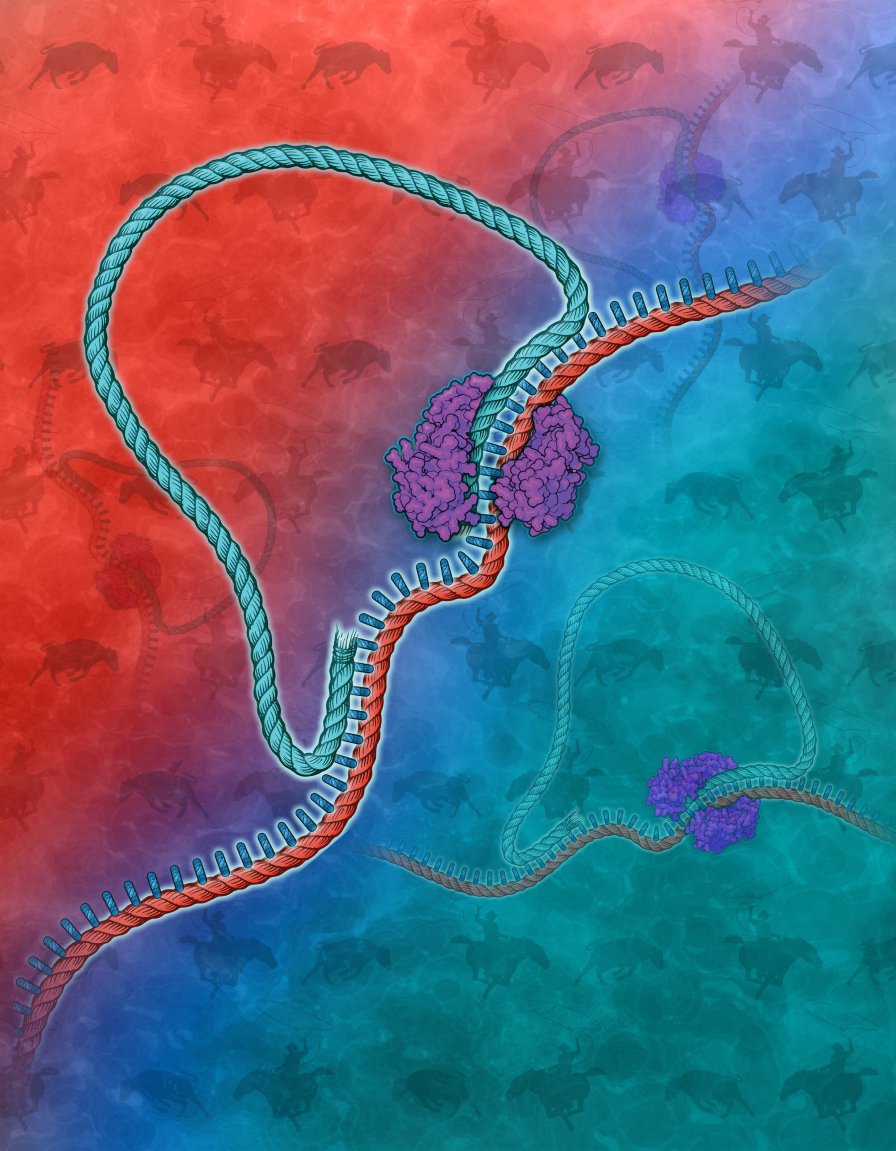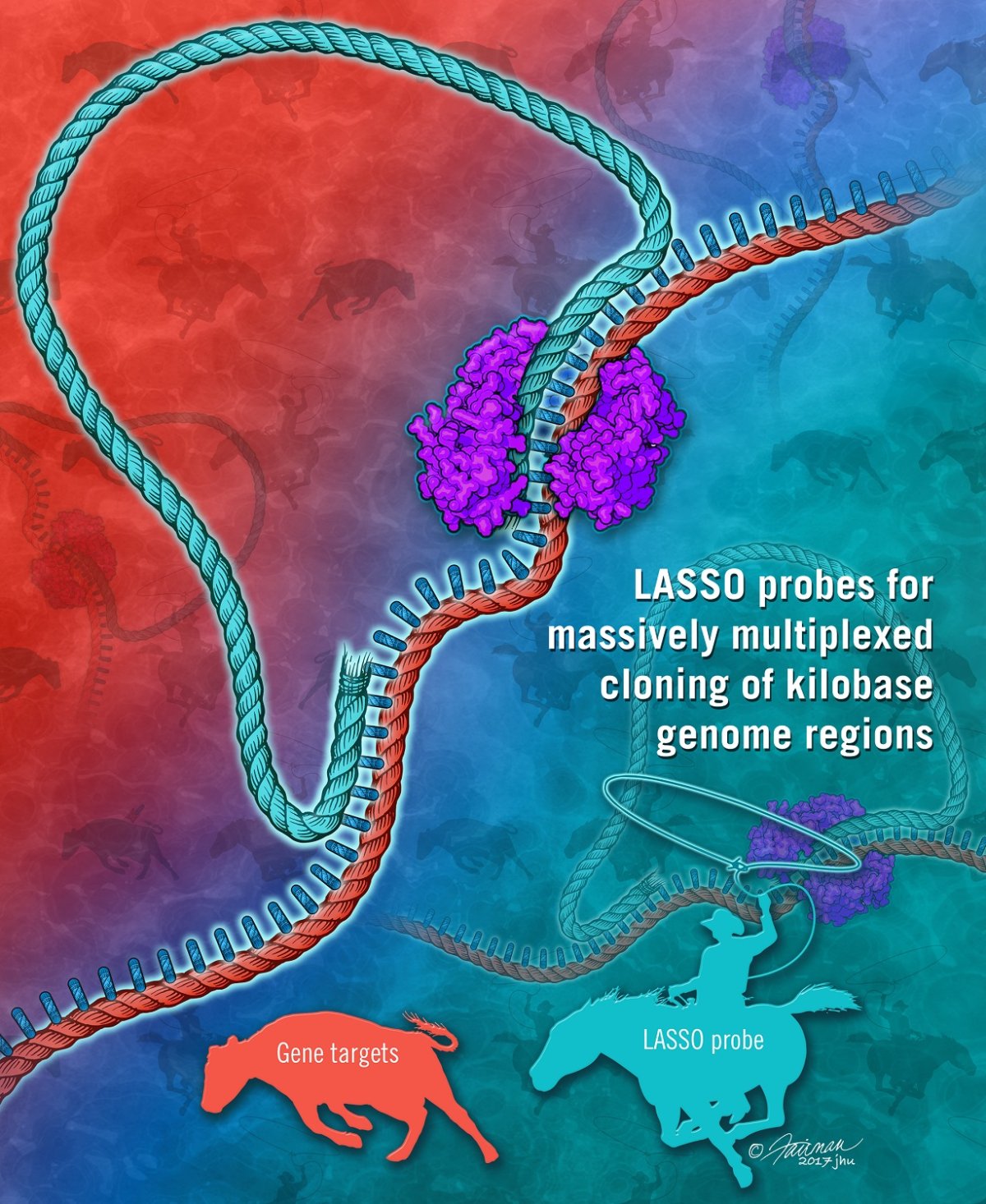
LASSO Cloning
Scientists from Harvard Medical School, Johns Hopkins, Rutgers, and the University of Trento in Italy have developed LASSO cloning, a new molecular technique. LASSO cloning can be used to simultaneously isolate long DNA sequences faster than was previously possible. This new technique speeds up protein creation, which means that genes (the final product of the process) are arrived at more quickly. This, in turn, can enable far more rapid discovery of biomarkers for numerous diseases and their treatments.
In the past, researchers have sussed out what a gene does by cloning its DNA and then expressing the protein it codes for — single gene by single gene. With this novel molecular approach, a single reaction can clone and express thousands of DNA sequences at once. The technique involves the use of a novel captured DNA strand, the LASSO probe (Long Adapter Single-Stranded Oligonucleotide). Researchers can use collections of these tools to “grab” DNA sequences they’re after. Unlike a cowboy roping cattle, however, scientists using the LASSO probe can capture thousands of sequences in a single try.

High-Speed Discoveries
The LASSO technique improves on molecular inversion probes (MIPs), an older method which is limited to capturing only about 200 DNA bases at once. This is minuscule compared to each LASSO target gene sequence which can be as much as a few thousand DNA base pairs long—around the length of a typical gene’s protein-coding sequence.
The team used LASSO probes to simultaneously capture more than 3,000 DNA fragments from the E. coli genome as part of a proof-of-concept study. They captured at least 75 percent of their gene targets successfully. More importantly, however, the tool allows researchers to capture sequences in a way that allows them to analyze what the corresponding proteins do.
“We’re very excited about all the potential applications for LASSO cloning,” Larman said in the release. “Our hope is that by greatly expanding the number of proteins that can be expressed and screened in parallel, the road to interesting biology and new therapeutic biomolecules will be dramatically shortened for many researchers.”